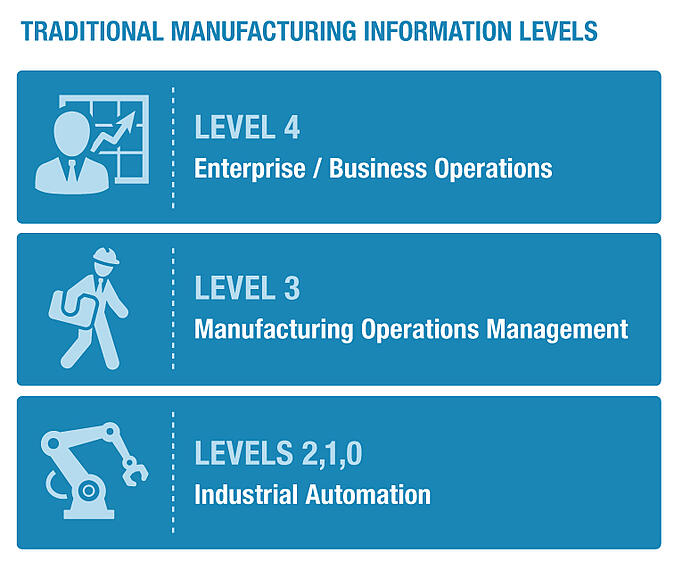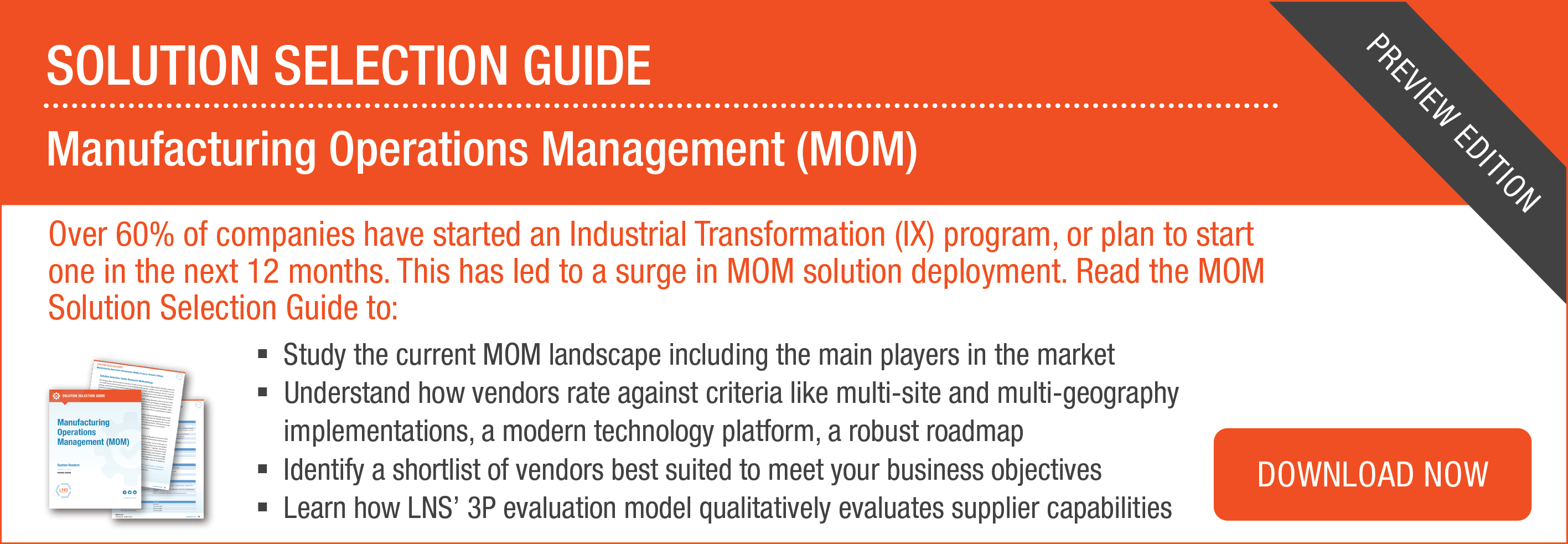'Real-time information' is a term that's bandied about by vendors and end-users alike when it comes to discussions about manufacturing and enterprise software. For example, we talk about real-time data, real-time visualization, and real-time reporting. It's also a term that can be used liberally by marketers to describe and promote product capabilities.
But how ‘real’ is real-time actually? That depends on who you talk to–and what kind of ‘real-time’ information and activity is fast enough for your needs. Based on process ownership, functional requirements, technology and the desired uses of real-time information, there are different interpretations of what it actually means.
In this article we’ll discuss the various interpretations and layers of real-time information and how it actually relates to agile decision making.
Does Real-Time Even Exist?
First, let’s look at the fact that real-time is a bit of a misnomer. While it suggests the space of time between input and output is instantaneous, nothing is ever authentically 'real-time.' In manufacturing automation, human-machine interaction, production tracking, and production planning, there will always be some sort of delay–however small, in some cases–between the input and output of information. And that’s ok. We’ll never have perfect simultaneity in these contexts.
But in software we talk about real-time as the time between the inputting of information and the manifestations of that information, including reporting, analytics, visualizations, collaborations, and automatic responses.
There tend to be three clear levels in terms of how real-time information is collected and reported:

- Industrial Automation/Machine Level: This tier of real-time information relates to incredibly fast, sub-second data and automated responses that are required to ensure safe and efficient plant operations. Real time in this category tends to be on the order of milliseconds, and it rests in the hands of machines in order to take the human factor out of critical responses at this level.
- Manufacturing Operations Management Level: This level describes information relayed to humans or between different computing applications, and used to inform on-the-fly decision making at the plant level. Real-time responses at this level are restricted by the limitations of a human’s capacity to respond and input transactional information, so they’re more on the order of seconds or minutes.
- Enterprise/Business Operations Level: This type of 'real-time' information is more relevant to business and technical management and executive levels, and describes performance-based data that would be used to inform business decision-making. This can be in terms of hours, days, weeks, or more.
So the term real-time is used in different contexts to describe different levels of response requirements and within those different levels the speed of real-time can vary considerably.
The ‘Five Rights’ of Real-Time
And there are varying levels of real-time speed, because not everything requires the same speed. Faster isn’t always better or required. The baseline of requirements can be thought of as real-time speed only having to be as quick as the speed of action. But another way to think of it is in terms of the Five Rights:
- Getting the right information collected and presented
- Delivering the right information only to the right people (i.e., those who need to know, to ensure they’re not distracted by 'noise')
- Giving the right information at the right time, so they know what they need to know in order to take effective actions
- Providing the right information in the context of the right rationale, so people know why they’re receiving information, and what they need to do about it
- Ensuring the right actions are taken
The Acceleration of Real-Time Information Use
While real-time legitimately exists at the manufacturing automation level described earlier, there is a trend towards accelerating automated data collection and delivery at the manufacturing operations and business levels as well. We are seeing faster and faster decision-making, both in operational metrics and corporate, performance-based metrics.
There's a competition-based motive at hand here: our recent Manufacturing, Quality and Metrics research shows a clear trend that businesses are increasingly capable of getting real-time performance metrics faster to be more agile to making adjustments and improvements in quality, customer delivery, efficiency, costs, and compliance.
For example, we have seen a major IT company invest in technology designed for improved memory processing across large databases. One application of this is to enable decision-makers to decide if they can accept a rush business decision based on what-if scenarios that are generated a whole lot faster than they were previously. Calculations that used to take hours to crunch now take minutes.
Which 'Real-Time' is Fast Enough for You?
We’ve established that there are different levels of real-time information that apply to different roles and requirements. What’s important to remember in all this is to know which kind of real-time you are talking about, especially when working with vendors to ensure a prospect solution is the best fit and offers the appropriate capabilities.
So in addition to asking how ‘real-time’ is fast enough for your requirements, it is handy to turn to the Five Rights, but in particular it is imperative to know that an overload of data can be a net negative. If the right people are getting too much immaterial or irrelevant information, it can really muddy the waters and achieve the opposite effect. So ensure your real-time data is tailored for the intended audience.
Lastly, while 'real-time' at the manufacturing operations level is maturing and still remains a bit of a fallacy at the business-decision-making level, we are witnessing a trend towards collecting and processing data at these levels at a faster and faster rate. So in the interest of staying competitive and boosting performance, it’s wise to keep up so your organization is as well-equipped.
Interested in learning about which software vendors offer real-time data collection and analytics capabilities? For more information, read LNS Research's MOM Solution Selection Guide and EQMS Solution Selection Guide.
